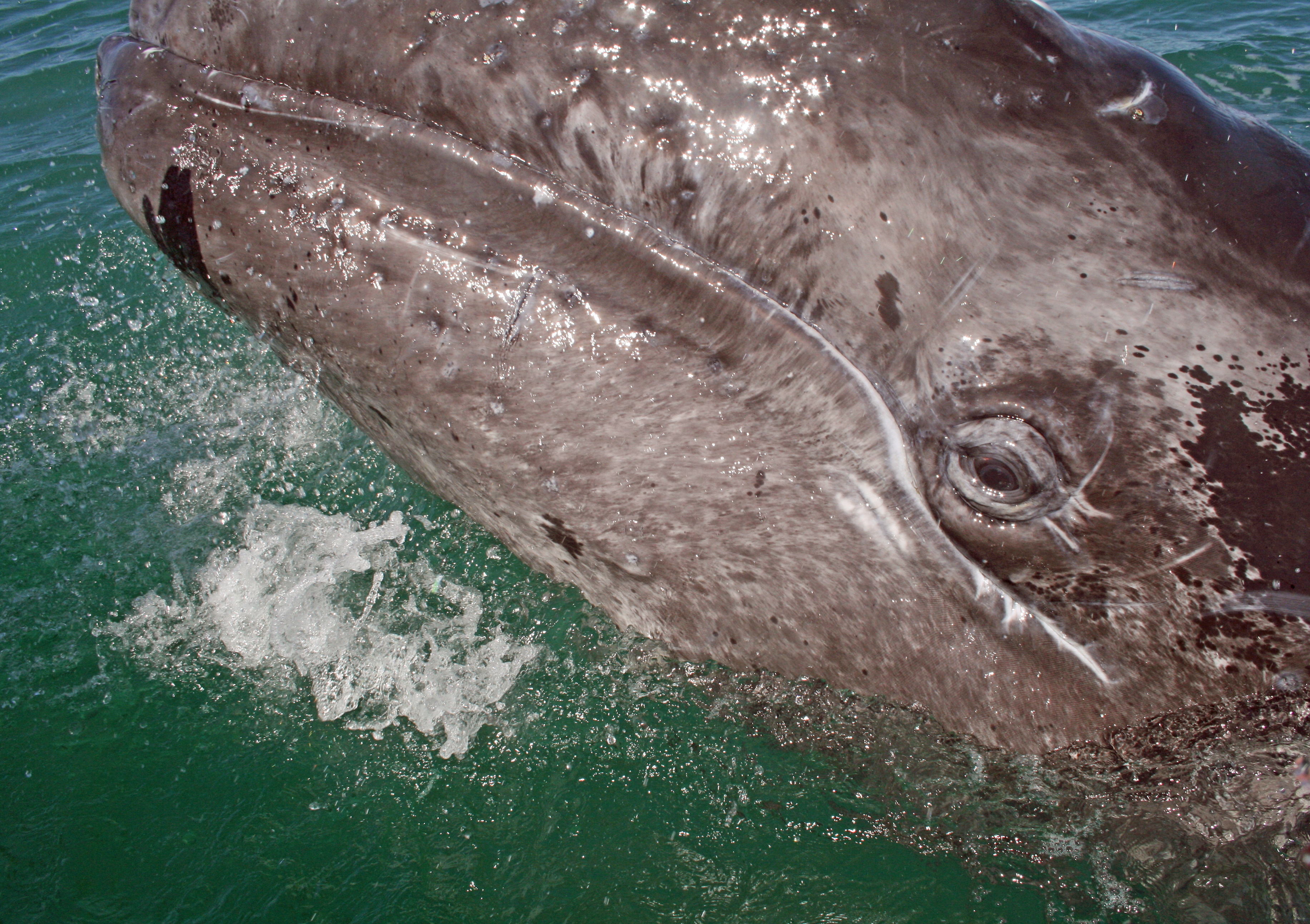

However, if not hurt or provoked, gray whales are known for being friendly and inquisitive, and will even approach boats if they are acquainted with human activity. Back when whaling was much more prevalent, gray whales used to also be called devil fish, due to their immediate and aggressive reaction when actively targeted or harmed.By the end of the "nursing" stage of life, calves grow to two times their birth length and eight times their birth mass. The milk a gray whale calf drinks from its mother consists of 53% fat for comparison, human milk is only 2%. Gray whale calves are about 15 feet (4.5 meters) in length, and will gain 60 to 70 pounds per day as they grow.They are known for their ferocity in protecting their young, and will put themselves between their calf and any potential threats, including their only known predator: orcas. Another piece of trivia information that is accurate is the part relating to the maternal instincts of gray whale mothers.One of the most well-known and well-studied groups of resident gray whales stays in Depoe Bay over the summer, off of the Oregon coast. While many whales undertake such a long journey, there are groups of whales that will stay put in one place for at least a few days out of each year rather than continue onward these are known as "resident whales".Gray whales do indeed migrate 12,430 miles (20,000 kilometers) round-trip from Alaska to Mexico, which means that they really do have one of the longest migration trips amongst mammals.

The in-game trivia of the gray whale makes note of their massive migration distance, a piece of information that is accurate to real life.However, whales will still rub themselves along the ocean floor to get rid of them if they become irritating, or they may breach the water's surface in the hope of knocking some lice off when they fall back into the sea. The whale lice are helpful in some respects, because they can feed on dead and damaged tissue, which helps keep wounds clean.The barnacles are not truly parasitic, as they do not harm the whale, but they do leave depigmented (whitened) spots on the whale's skin, which can create patterns distinct enough to identify specific whales.These are, in fact, barnacles and whale lice gray whales are typically carrying over 400 pounds of the things. The in-game description is accurate concerning its remark on the patches covering the whale's skin.A couple of gray whales appear on Endless Ocean 2's box art, although they are shown to swim through the Coral Valley as opposed to the Twin Crevasses.Interestingly, only the gray whales seen around the Twin Crevasses count as his favorite, not the ones that appear near the Echoing Terrace during the plot.This is one of Jean-Eric's favorite creatures.The player can obtain their trivia by using the Sea Whistle in their general vicinity. These whales stay together in a loose group of three or four. Several specimens (among other species) can also be seen near the Echoing Terrace after the player first discovers the Cavern of the Gods, though they are not permanent residents. At night, they are replaced by a lone Sperm Whale. Gray whales can be found in a large group in the Zahhab Region, with their area of habitation spanning coordinates C-5, D-5, C-6, D-6, and D-7, mostly swimming over the Twin Crevasses, though only during daylight hours. The mother whale stays close to the calf while rearing it and will protect it with no consideration for her own safety, even taking on whaling boats." Location Endless Ocean 2 In the winter they move to their breeding grounds where females give birth to a single calf. "Their annual migration covers some 20,000km, said to be the longest of any mammal. These spots are not patterns on the whale's skin, but groups of corn barnacles or the parasitic whale louse." "This whale is grey with white and orange spots.


 0 kommentar(er)
0 kommentar(er)
